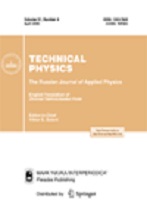|
Solids
Nonlinear effects of the thermal stabilization theory of applied superconducting materials
V. R. Romanovskii
National Research Centre "Kurchatov Institute", Moscow
Abstract:
The stability of dissipative states of a Bi$_{2}$Sr$_{2}$CaCu$_{2}$O$_{8}$ applied superconducting composite cooled by liquid helium or hydrogen with continuously increasing current-voltage characteristics described by a power equation has been studied. It has been shown that, under intensive cooling conditions, special conditions of thermal stabilization can exist for applied superconducting materials (technical superconductors) if the nonlinear temperature dependences of critical current density and specific resistance of the stabilizing matrix are taken into account. First, the minimum currents of existence and propagation of a normal zone can be absent. Second, the intensive cooling of a technical superconductor substantially increases the range of stable currents in the diapason of supercritical currents. Third, during the irreversible propagation of the thermal instability, the temperature of a technical superconductor can increase under conditions close to adiabatic, despite cooling by liquid coolant. These effects should be taken into account upon determining the conditions for overheating a technical superconductor. The numerical experiments have been compared with the results that follow from the thermal stabilization theory of combined superconductors, which assumes a linear temperature dependence of critical current density of a superconductor and a step-wise transition from the superconducting to normal state.
Received: 27.10.2016
Citation:
V. R. Romanovskii, “Nonlinear effects of the thermal stabilization theory of applied superconducting materials”, Zhurnal Tekhnicheskoi Fiziki, 87:11 (2017), 1649–1657; Tech. Phys., 62:11 (2017), 1651–1659
Linking options:
https://www.mathnet.ru/eng/jtf6072 https://www.mathnet.ru/eng/jtf/v87/i11/p1649
|


| Statistics & downloads: |
| Abstract page: | 51 | | Full-text PDF : | 16 |
|





 Contact us:
Contact us: Terms of Use
Terms of Use
 Registration to the website
Registration to the website Logotypes
Logotypes








 Citation in format
Citation in format 